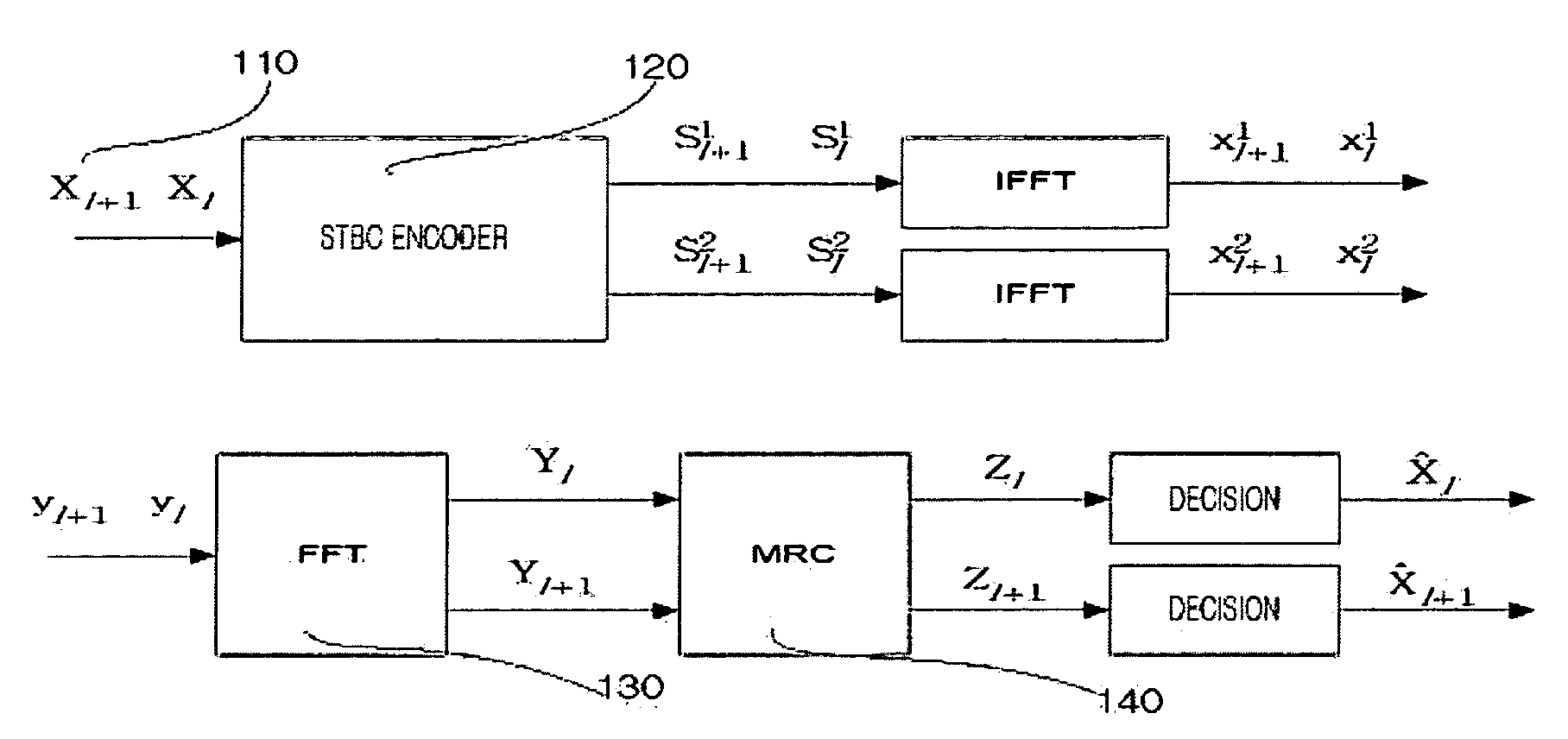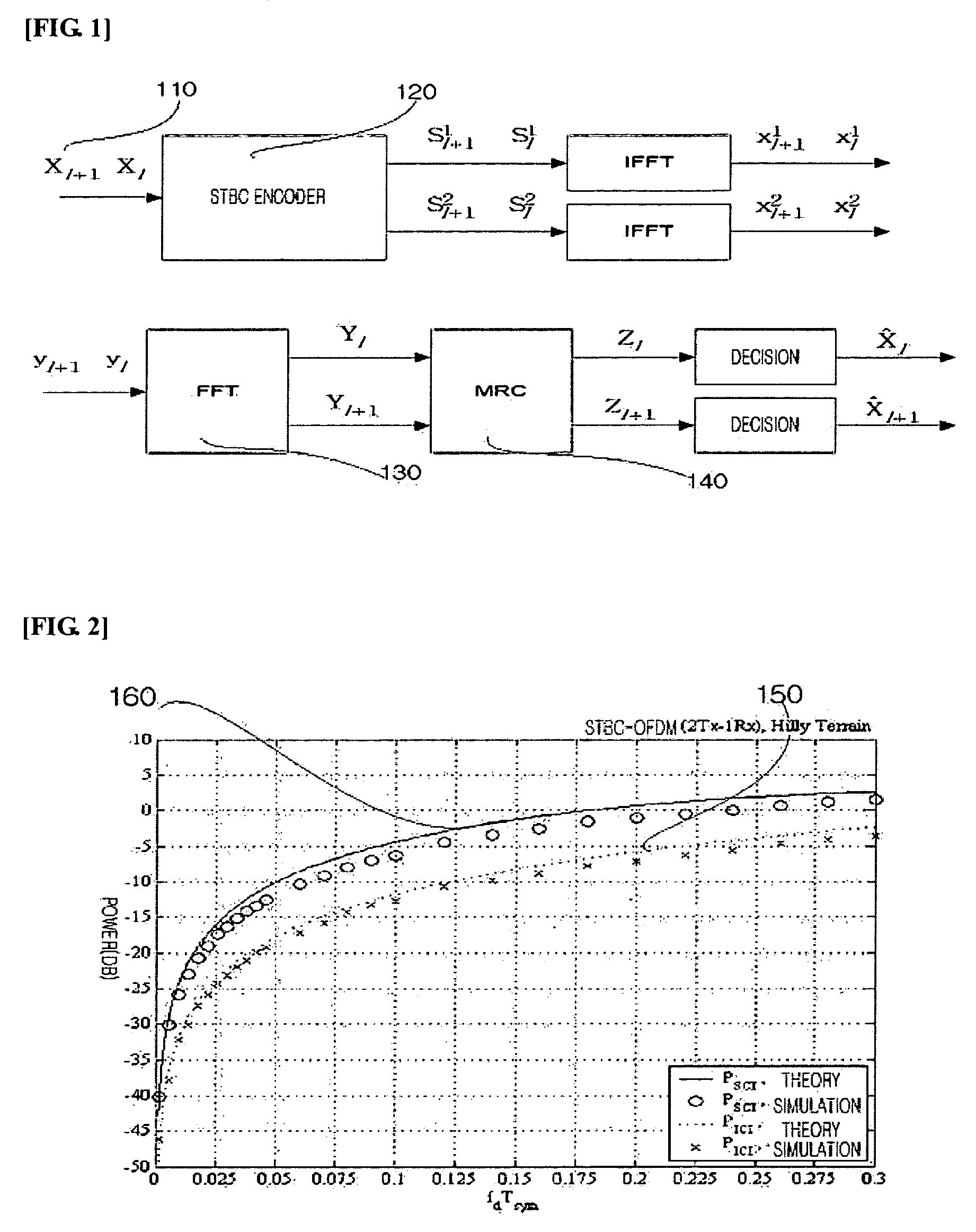Method for eliminating reception interference signal of space-time block coded orthogonal frequency division-multiplexing system in high-speed mobile channel
a technology of spacetime block and orthogonal frequency division, which is applied in the field of eliminating the reception interference signal of spacetime block coded orthogonal frequency divisionmultiplexing system in high-speed mobile channel, can solve the problems of increasing the probability of decision-error, the magnitude of noise, and the complexity of equipmen
- Summary
- Abstract
- Description
- Claims
- Application Information
AI Technical Summary
Benefits of technology
Problems solved by technology
Method used
Image
Examples
Embodiment Construction
[0016] Reference now should be made to the drawings, in which the same reference numerals are used throughout the different drawings to designate the same or similar components.
[0017]FIG. 1 schematically illustrates an STBC-OFDM transmitting and receiving end, with two transmitting antennas (M=2) and one receiving antenna (K=1). In FIG. 1, a data vector 110, Xl+d(d=0, 1), is input to an STBC encoder 120, and the STBC encoder 120 encodes the input data as follows: [Xl(k)Xl+1(k)]→STBC[Sl1(k)Sl2(k)Sl+11(k)Sl+12(k)]=[Xl(k)Xl+1(k)-Xl+1*(k)Xl*(k)]space→ time↓(1)
[0018] In Equation 1, l is an OFDM symbol period, and k is a sub-carrier index. A baseband modulation signal transmitted through an i-th transmitting antenna in an (l+d)-th OFDM symbol period is as follows: xl+di=[xl+di(0),xl+di(1),L,xl+di(N-1)]T=IDFT{Sl+di}=1NFSl+di(2)
[0019] In Equation 2, d=0 or 1, i=1 or 2, and Sli=[Sli(0), Sli(1), L, Sli(N−1)]T. Furthermore, F is an IDFT matrix whose (n, k)-th element is ei...
PUM
 Login to View More
Login to View More Abstract
Description
Claims
Application Information
 Login to View More
Login to View More - R&D
- Intellectual Property
- Life Sciences
- Materials
- Tech Scout
- Unparalleled Data Quality
- Higher Quality Content
- 60% Fewer Hallucinations
Browse by: Latest US Patents, China's latest patents, Technical Efficacy Thesaurus, Application Domain, Technology Topic, Popular Technical Reports.
© 2025 PatSnap. All rights reserved.Legal|Privacy policy|Modern Slavery Act Transparency Statement|Sitemap|About US| Contact US: help@patsnap.com



